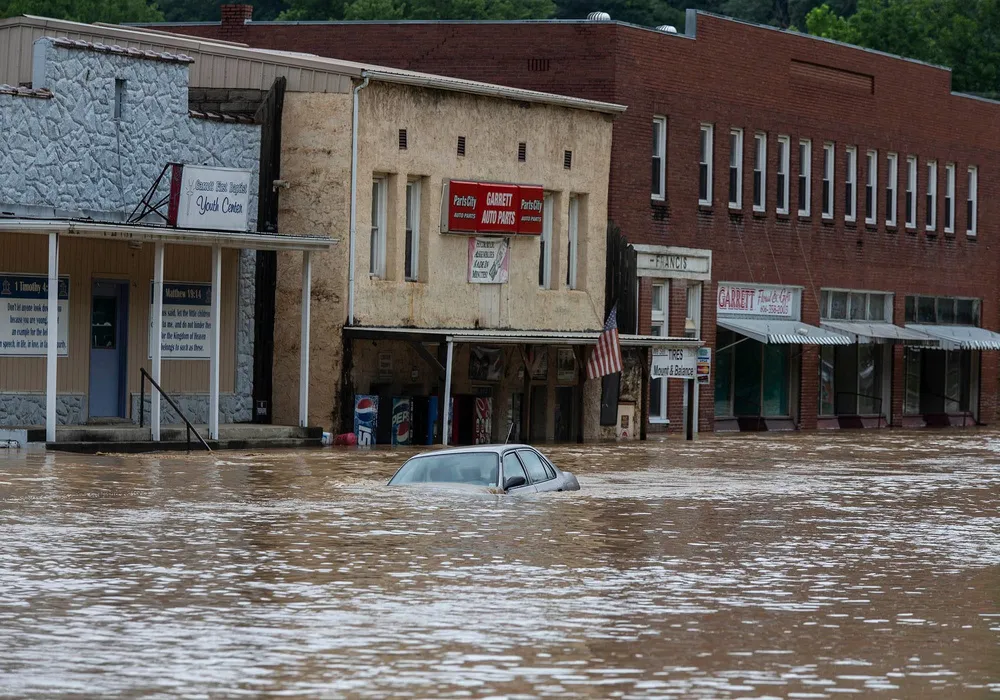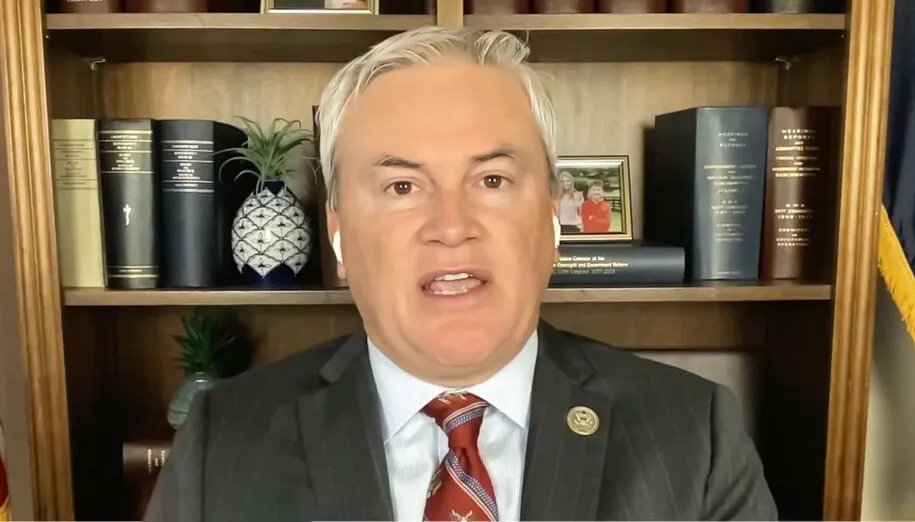A Kentucky advocacy group is calling on the federal government to launch an investigation into whether a legacy of surface coal mining in Eastern Kentucky exacerbated the catastrophic, deadly flooding the region faced last July.
Kentuckians For The Commonwealth (KFTC), a progressive, grassroots organization known for lobbying on environmental issues, made public Monday a letter it was sending to federal surface mine regulators. The letter not only requests an investigation into whether a relationship exists between surface coal mining and the severity of floods, but also calls on federal officials to investigate a state agency charged with inspecting surface coal mines.
Steve Peake, the pastor of Corinth Missionary Baptist Church, spoke about how the floods around July 28 impacted his Letcher County home and community of Neon compared to previous decades. Peake said two feet of water came onto his property and into his home, floating away his garage and car.
“We had had some floods but we’d never had anything like the flood that came through July 28,” Peake said during a virtual press conference. “Water came off the mountains I think where the strip mining had took place – nothing on the mountain to hold the water back. So it all came down.”
KFTC created an interactive map showing the proximity of surface mining to where dozens of Kentuckians died in the flood. The map pulls from a dataset compiled by the group of where flood victims’ died through obituaries, news stories, and other sources. The map then compares those approximate locations to where large-scale surface coal mines are, using data from the environmental advocacy nonprofit SkyTruth.
The group’s request to federal officials hones in on the implementation of the federal Surface Mining Control and Reclamation Act — established in the 1970s in the wake of a coal slurry dam failing and killing 125 people and leaving thousands homeless in West Virginia — that regulates the reclamation of abandoned mines and oversees active mines. The Office of Surface Mining Regulation and Enforcement (OSMRE), where the letter was sent, was created through the legislation.
Beverly May, a member of KFTC and an epidemiologist working at the University of Kentucky, said the interactive map gets to the heart of the group’s question: whether decades-old federal legislation meant to protect people and the environment from the adverse effects of coal mining had worked as intended.
“Was the (Surface Mining Control and Reclamation Act) faithfully implemented to carry out its purpose of protecting human life?” May said. “And if it wasn’t, then what do we need to do to protect people from the next major rain event and the next flood that’s surely coming?”
The group’s letter specifically asks federal officials to investigate Kentucky’s Division of Mine Reclamation and Enforcement (DMRE), the state agency in charge of inspecting surface mines for compliance with the federal Surface Mining Control and Reclamation Act.
“We are gravely concerned that incomplete reclamation of inactive mines and regulatory failure to enforce contemporaneous reclamation of active mines contributed to the devastation of the July 2022 flood,” the letter states. “The US Office of Surface Mining has the authority and the moral and legal duty to investigate whether inadequate enforcement of reclamation laws by the DMRE contributed to loss of life and property.”
Kentucky Energy and Environment Cabinet spokesperson John Mura in a statement said federal officials have been “in touch” with the state’s mining regulation agency “almost daily and has received frequent positive feedback” on the Cabinet’s oversight of mining operations.
“The Kentucky Energy and Environment Cabinet would welcome any Department of the Interior (DOI) analysis of any surface mining contribution to the flooding in eastern Kentucky from the July rain event that produced upwards of 14-16″ of rain in some places, over 600% of normal,” Mura said, referencing analysis from the National Weather Service.
The Office of Surface Mining Regulation and Enforcement did not immediately respond to a request for comment.
Davie Ransdell, a former supervisor for the Kentucky Division of Mining Permits and a member of KFTC, said the group also tracked more than 100 complaints made to the state in the months after the 2022 floods that describe slides, slips, and pond failures. KFTC’s letter also asks federal officials for more assistance to help document such reported surface mining failures.
Ransdell was one of two former mining regulators who called for an investigation shortly after the July 2022 floods into whether surface mining increased the severity of the disaster.
Peake, the Letcher County pastor, said he prays such an investigation could help provide a liveable future for people who want to stay in their Eastern Kentucky communities.
“We love the mountains. That’s why we’re still living here,” Peake said. “We’d like to see things rectified so that we can continue living, not under the threat of going to have another flood.”
--30--
Written by Liam Niemeyer. Cross-posted from the Kentucky Lantern.
Comments








